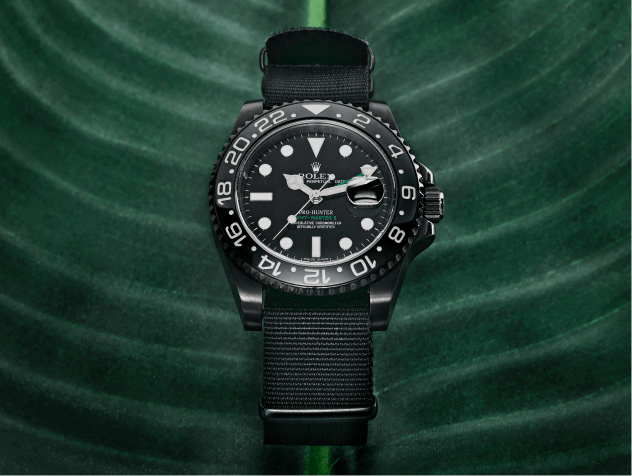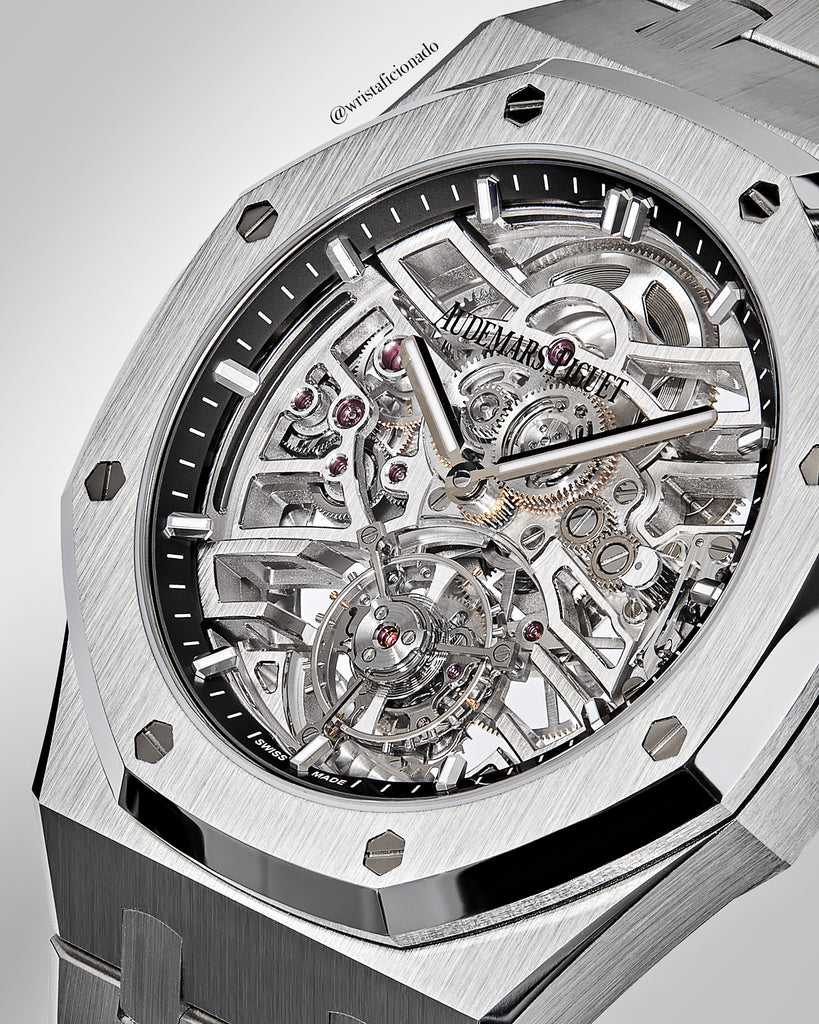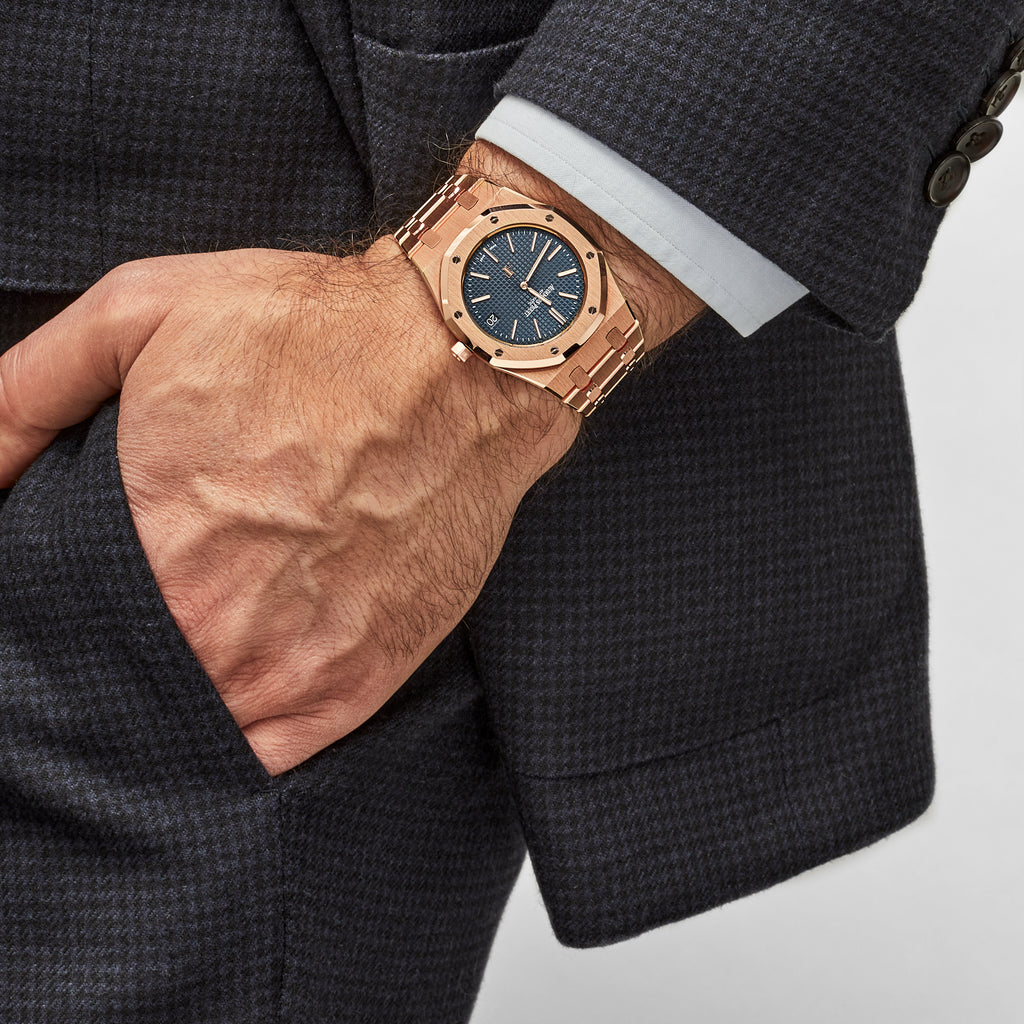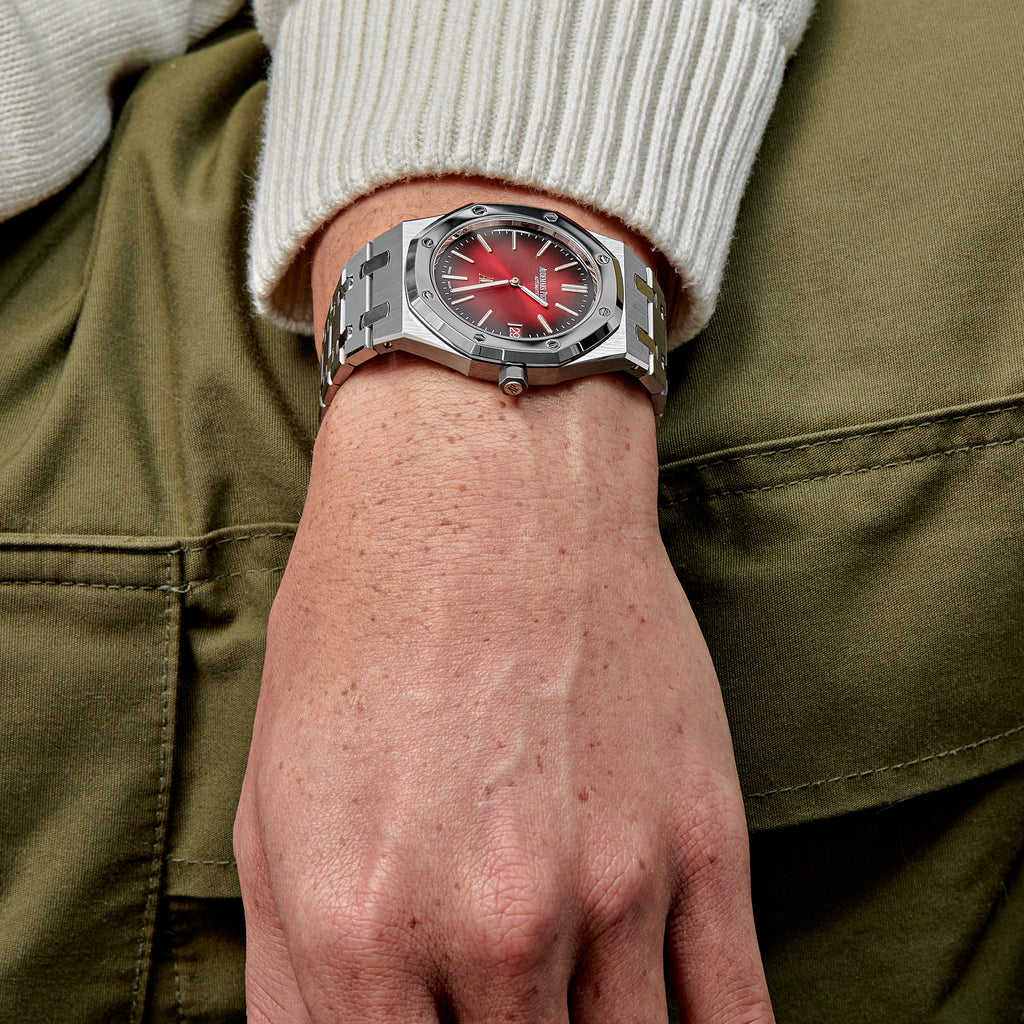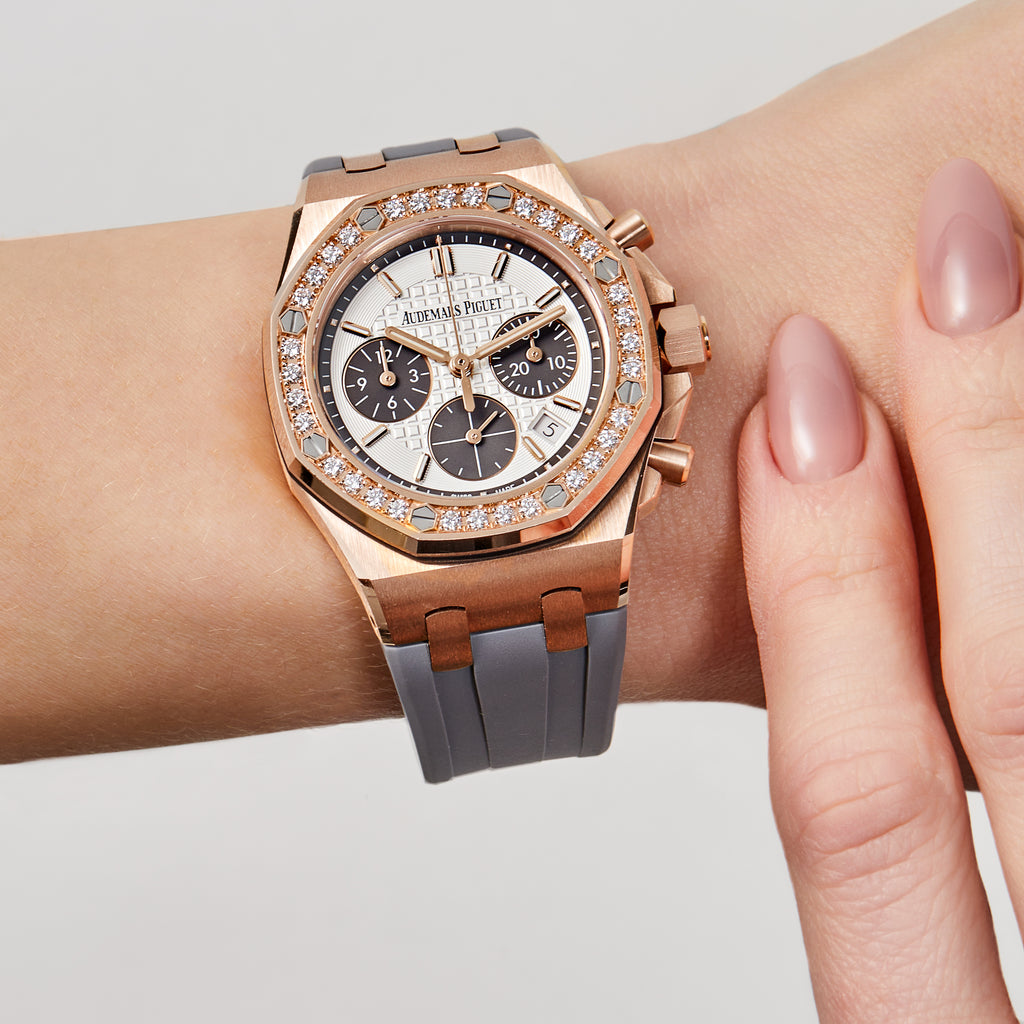Audemars Piguet is one of the world’s premier luxury watch manufacturers, and its signature Royal Oak collection is widely regarded as one of the true icons of horology. In addition to being a consistent favorite among professional athletes and celebrities, Audemars Piguet watches are also incredibly collectible, and it is not uncommon to see some examples trade hands for prices that are deep into the six-figure territory. Everyone is familiar with Audemars Piguet and has heard of the Royal Oak; however, to truly understand the nuances of the historic Swiss brand’s collection, you are going to first need to learn how to decode Audemars Piguet reference numbers.
While Audemars Piguet watches are typically referred to by their model names, each one can more accurately be described by its reference number, which is a series of digits and letters that the brand assigns to each one of its models. While they may seem like random combinations of characters, Audemars Piguet reference numbers are actually complete descriptions of their respective models, and every single letter or digit is significant. Without ever even seeing a photo of a watch, just the reference number of an Audemars Piguet will tell you the specific model and the materials that are used in its construction, along with the type of bezel, strap/bracelet, and even details about the dial that is fitted to it.
Why Audemars Piguet Reference Numbers Are Important
In casual conversation, most people refer to Audemars Piguet watches by their model names or nicknames, although these shorthand monikers seldom fully describe the watch. For example, the classic 39mm Royal Oak “Jumbo” has existed since 1972, and it has been produced in a handful of different configurations throughout the years. Therefore, this description alone does not specify any of the other relevant details about the watch, such as the generation of “Jumbo” or the materials that are used for its signature octagonal case and integrated bracelet.
Therefore, in order to discuss Audemars Piguet watches in a more complete and detailed manner, collectors turn to their reference numbers, which follow a consistent format and convey all of the relevant details about their respective models. Just within its current catalog, Audemars Piguet offers multiple different versions of the Royal Oak “Jumbo” in 18k white gold, and even the fully iced-out model that has a diamond bezel and a matching diamond-set bracelet is available with two different dial options. Rather than saying you have the current-generation white gold Royal Oak “Jumbo” with a diamond bezel, blue “Petite Tapisserie” dial, and matching diamond-set white gold bracelet, you could simply say you own the reference 16202BC.ZZ.1241BC.02, and this will convey all of the same information.
About Audemars Piguet Reference Numbers
Audemars Piguet reference numbers typically consist of six different parts that are grouped into four sections separated by periods, and they follow the format outlined in the example below, where the lowercase x’s represent numerals and the uppercase X’s represent letters.
xxxxxXX.XX.xxxxXX.xx
It’s also important to note that Audemars Piguet didn’t always use this reference number system. For example, the case material code was added to the brand’s numbering system in the 1970s, and the root reference numbers increased from four to five digits in the mid-1980s. Additionally, starting in the early 2000s, Audemars Piguet began gradually adding additional sections and codes to its numbering system to provide information about finishing, gem setting, bracelet or strap options, and even the type of dial that is fitted to the watch.
Section 1: Root Reference and Case Material
The first section of an Audemars Piguet reference number consists of five numbers followed by two letters. The numbers represent the root reference of the watch, while the two letters signify its materials. For example, the ref. 16202 is the classic time-and-date 39mm “Jumbo” Royal Oak Jumbo, although Audemars Piguet offers this model in a variety of different materials, so the ref. 16202ST is the stainless steel version, while the ref. 16202BA is the yellow gold model and the ref. 16202OR is the rose gold variation.
Section 2: Bezel Type
The second section of Audemars Piguet reference numbers describes the type of bezel that is fitted to the watch, and it is represented by the two letters that follow the root reference and material code. For example, there are multiple different versions of the Royal Oak “Jumbo” in white gold, so while the ref. 16202BC.OO is the version fitted with a standard gold bezel, the ref. 16202BC.ZZ will be a white gold “Jumbo” with a diamond-set bezel.
Section 3: Bracelet Type and Materials
The third section of an Audemars Piguet reference number consists of four digits followed by two letters. Similar to the root reference section, the numerical digits describe the type of strap or bracelet that is fitted to the watch, while the two letters denote the materials that are used in its construction. Watches of the same size and strap/bracelet style will share the first four numbers of their strap/bracelet code; however, since case size influences the strap or bracelet, the 39mm stainless steel Royal Oak “Jumbo” will have a different bracelet code than the larger 41mm version, and the diamond-set white gold “Jumbo” will have a different bracelet code than the standard white gold model due to the diamonds that appear on its links.
Section 4: Dial Style
The fourth and final section of an Audemars Piguet reference number consists of two digits that describe the dial fitted to the watch. Similar to how Patek Philippe handles dial codes within its reference number system, the dial codes used by Audemars Piguet are determined by the dial iteration for that specific model, rather than the actual style of the dial itself. For example, numerous different Royal Oak watches have “02” for their dial codes, although the appearance of these dials can differ significantly, as this code simply describes the second dial variation for that specific model.
Audemars Piguet Reference Number Codes
Every single digit in an Audemars Piguet reference number is important, and understanding the various codes that are associated with the different sections can tell you quite a lot of information about a timepiece. With that in mind, while some sections like the bezel and material codes follow very rigid systems, others such as the root reference and dial codes can be a bit more nebulous and are largely determined by previous releases within the series.
Root Reference Codes
The first five digits of an Audemars Piguet reference number (or four digits on vintage watches) that serve as the root reference don’t follow a uniform code that can be applied across all models from its archives. However, a few common trends exist across the brand’s modern collection, and recognizing these trends will allow you to easily identify certain models and styles of watches.
For example, when the fan-favorite Audemars Piguet Royal Oak “Jumbo” received a generational update in 2022 to celebrate its 50th anniversary, the root reference number for the series was updated from 15202 to 16202. Additionally, while the ref. 16202 is the classic time-and-date 39mm “Jumbo” from the current-production catalog, the skeletonized 39mm “Jumbo” Extra-Thin Openworked models are known as the ref. 16204. Familiarizing yourself with these trends will allow you to more easily identify some of the more common models, although Audemars Piguet has produced a vast assortment of different references throughout its history, so it isn’t necessarily worth your time learning all of them.
Case Material Codes
In addition to all of the classic metals such as stainless steel, gold, platinum, and titanium, Audemars Piguet also has a history of experimenting with various other case materials, and looking through the brand’s archives will reveal a vast assortment of different alloys, along with carbon fiber and several different colors of ceramic. Additionally, the brand also doesn’t shy away from using more than one material on its watches, and whenever this happens, Audemars Piguet will give that combination its own distinct two-letter material code. Consequently, there is a surprising amount of different case material codes, although many of them do not currently exist as options within the brand’s modern catalog.
|
Code |
Material |
Code |
Material |
|
AA |
Green gold |
OK |
Pink gold / rubber |
|
AC |
Yellow gold / white gold |
OL |
Pink gold / Tantalum |
|
AG |
Silver |
OM |
Pink gold / cermet |
|
AE |
Alacrite |
OR |
Pink gold |
|
AI |
Alacrite / Titanium |
OS |
Forged carbon / steel |
|
AK |
Yellow gold / rubber |
PA |
Platinum / yellow gold |
|
AL |
Aluminium |
PO |
Platinum / ceramic |
|
AP |
Yellow gold / platinum |
PM |
Platinum / cermet |
|
AR |
Yellow gold / pink gold |
PR |
Platinum / pink gold |
|
AU |
From 3 materials |
PT |
Platinum |
|
BA |
Yellow gold |
RA |
Pink gold / yellow gold |
|
BC |
White gold |
RC |
Pink gold / white gold |
|
CA |
White gold / yellow gold |
RO |
Pink gold / ceramic |
|
CB |
White ceramic |
RP |
Pink gold / platinum |
|
CE |
Black ceramic |
SA |
Steel / yellow gold |
|
CK |
White gold / rubber |
SB |
Blue PVD-treated steel |
|
CN |
White gold / ceramic |
SC |
Steel / white gold |
|
CR |
White gold / pink gold |
SK |
Steel / rubber |
|
FC |
Carbon fibres |
SN |
Black PVD-treated steel |
|
FO |
Forged carbon / ceramic |
SO |
Steel / carbon |
|
FR |
Carbon / pink gold |
SP |
Steel / platinum |
|
FS |
Carbon / steel |
SR |
Steel / pink gold |
|
IA |
Titanium / yellow gold |
ST |
Steel |
|
IB |
Titanium / blue PVD-treated steel |
TA |
Tantalum / yellow gold |
|
IC |
Titanium / white gold |
TI |
Titanium |
|
IK |
Titanium / rubber |
TK |
Tantalum / rubber |
|
IO |
Titanium / ceramic |
TL |
Tantalum |
|
IM |
Titanium / cermet |
TP |
Tantalum / platinum |
|
IP |
Titanium / platinum |
TR |
Tantalum / pink gold |
|
IR |
Titanium / pink gold |
TS |
Steel / tantalum |
|
IS |
Titanium / steel |
TT |
Tantalum / steel |
|
LT |
Brass |
ZI |
White diamond / blue sapphire setting |
|
OI |
Pink gold / Titanium |
ZO |
White diamond / onyx setting |
|
OF |
Pink gold / forged carbon |
XT |
Bulk metallic glass / titanium |
|
CM |
Brown ceramic |
SG |
Sand gold |
Bezel Codes
Compared to the vast assortment of case material codes, the two-letter bezel code section of an Audemars Piguet reference number offers a much more concise list of possibilities. However, similar to how a significant portion of the case material codes do not exist within the brand’s current production lineup, many of the bezel codes apply to various gem-set models that were created as limited editions and are no longer in production.
The majority of Audemars Piguet’s watches feature “OO” for their bezel code, and this denotes a standard unadorned bezel. Additionally, since this same code is used for any unadorned bezel, you will find both Royal Oak and Code 11.59 watches that feature “OO” codes for this section, even though their bezels offer very different designs. With that in mind, the variety of bezel codes starts to increase once you get into the premium gem-set models, and Audemars Piguet has produced quite a few different watches with various assortment of gemstones set into their bezels.
- OO - Standard smooth bezel
- GG - Frosted gold finish
- ZZ - Diamond bezel
- YY - Multi-colored sapphire bezel
- YG - Rainbow sapphire bezel
- SS - Blue sapphire bezel
- ZS - Graded blue sapphire bezel
- ZY - Sapphire and garnet bezel
- TV - Tsavorite bezel
- TO - Blue topaz bezel
- TM - Pink tourmaline bezel
- TZ - Tanzanite bezel
- GR - Garnet Bezel
- SE - Orange Spessartite bezel
- RY - Yellow Chrysoberyl bezel
- AY - Amethyst bezel
- RR - Ruby bezel
- EE- Emerald bezel
Strap/Bracelet Codes
The strap/bracelet code section is one of the more difficult parts to decipher, as two identical bracelet styles will have different numbers if they aren’t the same size. With that in mind, two parts of the strap/bracelet code section are fairly easy to identify, and these will inform you whether the model has a strap or a metal bracelet, along with the type of materials that are used in its construction. Additionally, if the watch is supposed to be fitted with some type of strap, the strap/bracelet code will also tell you the style of clasp or buckle that will be found on that particular model.
The first thing to look at will be whether or not there is a letter placed before the numbers of the strap/bracelet code. If there isn’t a letter, then the watch will be fitted with a matching metal bracelet. However, if you see a letter taking the place of the first digit for this section, then the watch is one of the brand’s strap-equipped models. Additionally, should there be a letter, it will either be an “A” or a “D” that is used, with an “A” signifying a traditional tang-style buckle, while a “D” means that the strap is fitted with a deployant-style folding clasp.
The second useful part of the strap/bracelet code section will be the two letters that appear at the end of the numerical code, and this part describes the materials of the strap or bracelet. For Audemars Piguet’s bracelet-equipped models, the material code for the bracelet will almost always be the same as the material code for the case, since the bracelet is intended to match the rest of the watch. However, if the model is one of Audemars Piguet’s strap-equipped watches, then the materials section of the strap/bracelet code will tell you what kind of strap is supposed to be fitted to it, and the letter codes used for Audemars Piguet straps follow the system outline below.
- CA - Rubber strap
- CR - Alligator leather strap
- VE - Calfskin strap
- KB - Rubber-coated fabric strap
Dial Codes
The final part of an Audemars Piguet reference number consists of two digits that describe the dial of the watch, although it is important to note that the dial code itself doesn’t actually describe the various attributes of the dial such as its design or color. Instead, the dial code section of the reference number simply denotes the dial variation for that particular model, and multiple different watches with entirely different dials can all share the same two-digit dial code.
For example, the dial code “02” is used for the classic stainless steel Royal Oak “Jumbo” with a blue “Petite Tapisserie” dial (ref. 16202ST.OO.1240ST.02). However, this same code is also used for the diamond-paved dial that is fitted to the fully-iced out version of the rose gold Royal Oak Selfwinding Chronograph (ref. 26242OR.ZZ.1322OR.02), and these two dials have virtually nothing in common other than both belonging to models from the greater Royal Oak collection.
At the same time, two similar Audemars Piguet dials might have completely different dial codes attached to them, simply depending on the number of dial variations that have been featured within each series. For instance, the code “02” is used for the blue “Petite Tapisserie” dial found inside the classic 39mm version of the time-and-date Royal Oak, although a dial code of “06” is used for the "Grande Tapisserie" dial in the same "Bleu Nuit, Nuage 50" color that gets fitted to the 41mm version of the model.
How to Read Audemars Piguet Reference Numbers
The easiest way to read an Audemars Piguet reference number is to start with the first section and then move from left to right, as each additional part will provide more detailed information. In many instances, you may only need to read the first section to determine the exact watch described by the reference number, since some models only exist in a single configuration.
For example, the Travis Scott Royal Oak Perpetual Calendar Openworked “Cactus Jack” Limited Edition is the only watch that the brand produces in brown ceramic (at the time of writing), so while this model is formally designated as the reference 26585CM.OO.D301VE.01, you only need to see that “CM” in the first section of the reference number to know that it is referring to the Travis Scott version of the brand’s skeletonized Royal Oak Perpetual Calendar.
Once you have determined the model and its materials, the next step will be to quickly look at the bezel section to verify the style that is fitted to the watch. Since most Audemars Piguet models have some type of brushed or polished bezel, you will typically see the code “OO” used for this section, and the only examples that consistently deviate from this bezel code are the ones fitted with some type of gem-set or elaborately finished bezel.
Memorizing all of the different codes that are used for the various straps, bracelets, and dials probably isn’t a productive use of your time, although it is still worth looking at these two sections of a reference number for the additional information that they provide. Just verifying whether the strap/bracelet code begins with a number or letter will confirm whether the watch is fitted with a strap or a metal bracelet, and memorizing the small handful of strap/clasp codes will allow you to know the material of the strap and whether it has a folding clasp or pin buckle. Conversely, if this section begins with a number, it is typically safe to assume that the model is fitted with a matching bracelet in the same materials that are used for the case.
The dial section of Audemars Piguet reference numbers is arguably the least important since many of the brand’s models have only been fitted with one or two dial options. Consequently, you will generally see dial codes of “01” or “02” attached to the majority of the brand’s watches, although this section can still give you a sense of the variety found within a given series. Some models such as the stainless steel version of the 41mm time-and-date Royal Oak can be found with dial codes such as “07” or “09” and these are representative of a wider variety of dial color options within that series.
Lastly, it’s important to note that Audemars Piguet’s reference number system evolves with the brand, and since the Swiss manufacturer is always experimenting with novel materials, new codes are constantly being added to the system. Just within the last couple of years, we have seen several new materials such as chocolate brown ceramic, bulk metallic glass, and the brand’s 18k sand gold alloy added to the lineup, and all of these have been accompanied by new material codes. In many ways, Audemars Piguet reference numbers are similar to a language, and by learning the rules that apply to their structure and the various meanings associated with their numbers and letters, you can become fluent in these rather lengthy sets of characters and instantly determine all of the relevant details about any Audemars Piguet watch without ever even needing to see it.




